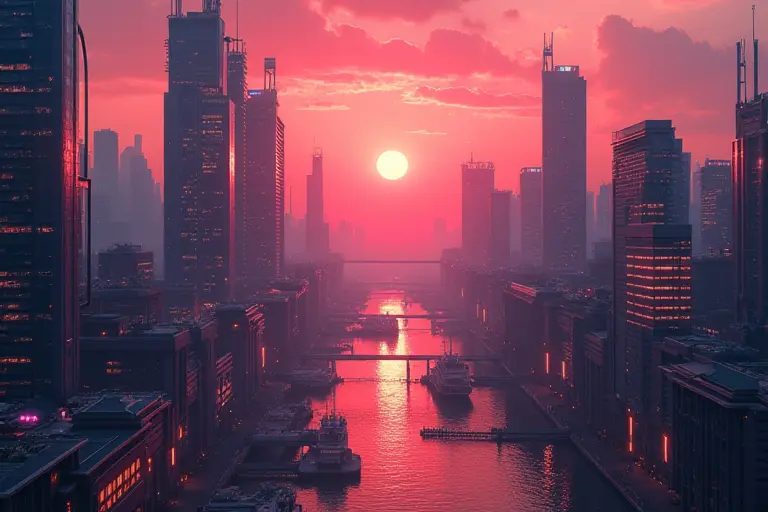Comparing Stable Diffusion and FLUX: Which Text-to-Image AI Reigns Supreme?
By Horay AI Team|
The growing field of AI-driven text-to-image models is increasingly revolutionizing the way artists generate visual content. In particular, two standout models in this space are Stable Diffusion and FLUX. Each has its strengths, making them suitable for diverse artistic and practical applications. But here comes the question, how do these two models compare when it comes to generating high-quality images? In this blog, we’ll explore the background and features of both Stable Diffusion 3 medium and FLUX dev, and then dive into examples and prompts to highlight their differences.
Stable Diffusion: Background & Key Features
Stable Diffusion 3 medium (SD3) is one of the most popular Multimodal Diffusion Transformer (MMDiT) text-to-image models, developed by Stability AI. Known for its powerful diffusion process, it is able to generate highly detailed and complex images based on textual descriptions. Its versatility and open-source nature have made it a favorite among developers, artists, and creators who want full control over their image generation processes.
Key Features of Stable Diffusion 3 medium:
- Open-source: Being open-source, SD3 allows users to modify and fine-tune the model according to their specific needs, offering endless customization options.
- High Image Quality: SD3 excels at creating intricate, high-resolution images with rich textures and detailed elements.
- Flexibility in Outputs: Users can guide SD3 with both simple and complex prompts, producing anything from abstract art to highly realistic visuals. In particular, its ability to handle the text in images has been greatly improved.
- Complex Iterations: SD3 is able to understand and manage various different and complicated prompts. It allows for detailed control over image generation through its multi-step diffusion process, making it ideal for complex and nuanced prompts.
FLUX: Background and Key Features
FLUX is a product of Black Forest Labs and is part of their larger AI suite designed to simplify the creative process for various users. FLUX dev, specifically, offers a balance between speed and image quality, placing it between the professional-grade FLUX Pro and the faster, but less detailed, FLUX Schnell. FLUX's major focus is to make image generation accessible to users who need high-quality results but don’t have time for highly complex prompt crafting.
Key Features of FLUX dev:
- Speed and Efficiency: FLUX dev is designed to produce high-quality visuals in a shorter amount of time compared to more complex models like FLUX pro. It offers a quick turnaround for users who need fast, iterative outputs.
- User-Friendly Interface: FLUX has provided an intuitive and easy-to-navigate interface, which is perfect for users who may not have extensive experience with AI models.
- Balanced Quality: While FLUX dev doesn’t match the detail level of SD3 in every scenario, it offers a solid balance of performance and visual richness, making it ideal for those who need professional-grade visuals without long processing times.
- Adaptability Across Use Cases: FLUX is highly adaptable across various fields, from marketing and advertising to game development or concept art creation.
What can you find out?
Before diving deep into the practicals, start by watching this:
This video presents a dynamic side-by-side comparison, showing some small differences between FLUX and Stable Diffusion in terms of image generation, creativity, and efficiency. See what you can find out first from this video. Get inspired and see how both Stable Diffusion and Flux stack up when it comes to real-world AI art generation.
Comparing Image Output: Prompt Examples
Prompt 1: "A futuristic city with neon lights at sunset."
- SD3: This model generates a hyper-detailed image featuring tall, sleek skyscrapers with glowing neon lights, intricate reflections on the buildings. There is a dramatic, richly colored sunset in the background, and the sunlight pours down on the buildings. The model's ability to handle complex textures can be evident in the way light interacts with various surfaces in the image.

- FLUX dev: This model creates a more streamlined version of the same prompt. While the neon lights and futuristic city elements are still present, FLUX prioritizes simplicity over extreme detail, giving a clean and symmetrical but visually striking representation of the city without the overwhelming level of detail found in SD3.

Prompt 2: "A serene lake with a mountain in the background, during a foggy morning."
- SD3: With its focus on intricate details, SD3 generates an image featuring a hyper-realistic scene, with the fog subtly diffusing the light over the lake. The mountain’s texture and the reflection in the lake is incredibly detailed, capturing the stillness of the moment.

- FLUX dev: In contrast, this model produces a more artistically simplified version. The fog and lake are presented, but the finer textures on the mountain may not be as sharp. However, the overall mood is still effectively captured, emphasizing a calm and serenity atmosphere of the setting.

Prompt 3: "A surrealist painting of a floating island with waterfalls."
- SD3: It creates an image with highly imaginative and intricate details, with cascading waterfalls, lush vegetation, a vibrant color palette and an enriched background. The surrealist aspect has been well-captured with unnatural elements blending into the scene seamlessly.

- FLUX dev: This version of the prompt focuses more on delivering a clean, artistic rendering of the floating island with a more minimalist touch. While the waterfalls and vegetation still present, FLUX dev simplifies the surreal elements slightly, creating a more approachable, stylized version of the scene.

Prompt Crafting Tips for SD3 vs. FLUX dev
The difference in outputs between these two models eventually boils down to how each interprets prompts. Here are several tips for crafting prompts for each model:
For Stable Diffusion 3 Medium:
- 1. Be extremely specific: Include detailed descriptions like textures, colors, and even lighting sources. SD3 is completely capable to handel your diverse needs.
- 2. Iterate frequently: Try different variations of the same prompt to see how different elements are represented.
- 3. Use modifiers: Include terms like "highly detailed" or "photorealistic" to guide the model toward more complex imagery.
For FLUX dev:
- 1. Keep it simple: FLUX tends to generate clean visuals even with less complex prompts, so focus on the overall impassive feel rather than overwhelming it with details.
- 2. Leverage artistic styles: Since FLUX is great at producing stylized art, using terms like "minimalist" or "cyberpunk" can yield results you want.
Conclusion
Both Stable Diffusion and FLUX can offer powerful tools for generating images from text, but their strengths lie in different areas. Stable Diffusion is perfect for users who want intricate, highly detailed visuals and are willing to invest time in crafting the perfect prompt. FLUX, on the other hand, shines in its ability to quickly produce high-quality visuals with less effort, making it ideal for creators who need efficiency.
Stay tuned as these models continue to evolve, opening up new possibilities for creators. Whether you prefer the precision of Stable Diffusion or the faster output of Flux, both are offering incredible ways to bring your ideas to life. The future of AI-generated art is bright, so stay focused on what these tools can do for your projects!